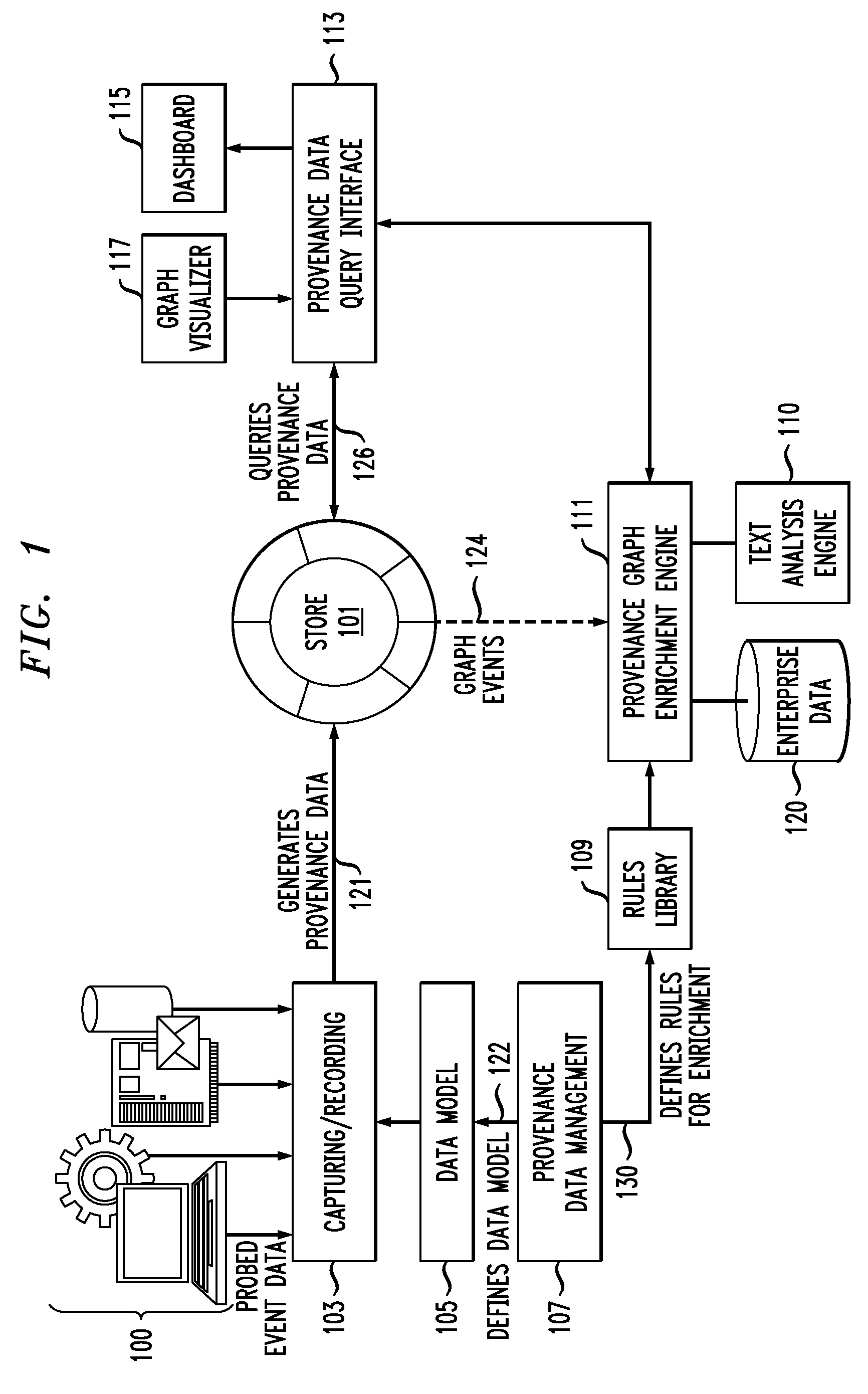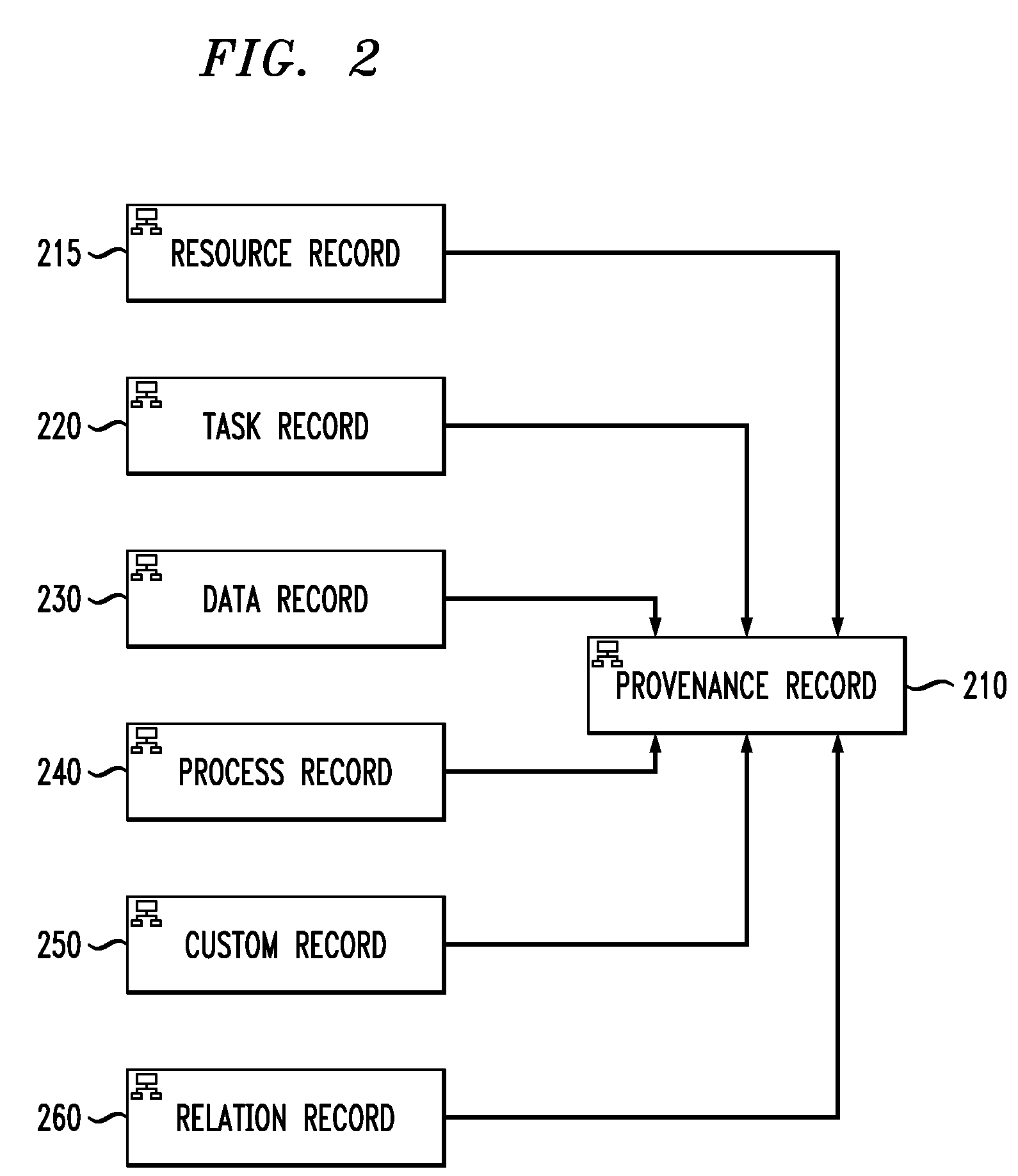Validating Compliance in Enterprise Operations Based on Provenance Data
a technology of provenance data and compliance, applied in the field of provenance data, can solve the problems of large labor and investment, cost, manual effort, etc., and achieve the effect of reducing the cost of analyzing the vast amount of information created by transactions between runtime system components to determine relevancy
- Summary
- Abstract
- Description
- Claims
- Application Information
AI Technical Summary
Benefits of technology
Problems solved by technology
Method used
Image
Examples
Embodiment Construction
[0022]As used herein, the term “enterprise” is understood to broadly refer to any entity that is created or formed to achieve some purpose, examples of which include, but are not limited to, an undertaking, an endeavor, a venture, a business, a concern, a corporation, an establishment, a firm, an organization, or the like. Thus, “enterprise processes” are processes that the enterprise performs in the course of attempting to achieve that purpose. By way of one example only, enterprise processes may comprise business processes.
[0023]As used herein, the term “provenance” is understood to broadly refer to an indication or determination of where something, such as a unit of data, came from or an indication or determination of what it was derived from. That is, the term “provenance” refers to the history or lineage of a particular item. Thus, “provenance information” or “provenance data” is information or data that provides this indication or results of such determination. By way of one e...
PUM
 Login to View More
Login to View More Abstract
Description
Claims
Application Information
 Login to View More
Login to View More - R&D
- Intellectual Property
- Life Sciences
- Materials
- Tech Scout
- Unparalleled Data Quality
- Higher Quality Content
- 60% Fewer Hallucinations
Browse by: Latest US Patents, China's latest patents, Technical Efficacy Thesaurus, Application Domain, Technology Topic, Popular Technical Reports.
© 2025 PatSnap. All rights reserved.Legal|Privacy policy|Modern Slavery Act Transparency Statement|Sitemap|About US| Contact US: help@patsnap.com



